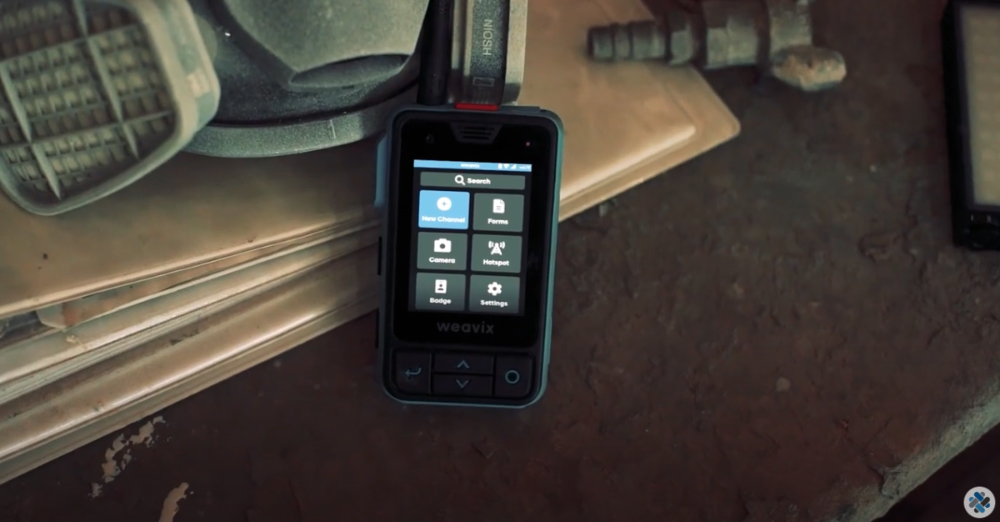Understanding hazardous area classifications is crucial to keeping frontline workers safe. To minimize risks in certain working locations, global standards, and a classification system have been implemented to rank hazardous working conditions and the devices approved to function within those areas.
These classifications help manage the presence of hazardous material and hazardous materials, ensuring safety and compliance.
These rankings are based on:
-
the products that are present within these areas,
-
if these products are ignitable under normal working conditions, creating flammable mixtures or explosive or ignitable mixtures, and
-
the types of products identified and produced or handled within these areas
Additionally, areas may contain combustible dust or easily ignitable fibers, which further define the classification.
Our walt™ smart radio is a certified Class 1 Div. 2 device. This means that workers can safely use all the available features of the device in a Class 1 Division 2 hazardous area or lower. As certain capabilities do not meet the safety standards for clearance in a Class 1 Division 1 hazardous area, walt cannot operate in those locations.
The National Electric Code (NEC) and National Electrical Code provide essential guidelines for these classifications.
When working in a hazardous environment, safety is the number one priority. Because of that, it’s important to understand what each of these classifications means.
NEC hazardous locations are defined to ensure the proper specification of electrical equipment in areas prone to fire or explosion hazards. These areas can produce explosive conditions due to the presence of flammable gases, vapors, or combustible dust.
Such locations can also produce ignitable mixtures when quantities sufficient of hazardous substances are present.

Class 1 Div.2 Hazardous Locations
Class 1 identifies hazardous locations where flammable gases or vapors may be present in the air under normal conditions at any time. Any location with this Class 1 hazardous location label distinguishes that those products are present and extra precautions should be taken while in or around the area.
There are two Divisions under the Class 1 classification: Class 1 Div. 1 and Class 1 Div. 2. Regarding hazardous locations, the distinction between the two is if the concentration of the flammable gases and vapors identified in its Class 1 designation is ignitable under normal working conditions or under abnormal working conditions.
If the concentration is enough to ignite under normal conditions, it’s a Class 1 Div. 1 area. If the concentration is enough to ignite under unusual conditions in the area, it’s labeled as Class 1 Div. 2.
A Class 1 Div. 2 environment handles, processes, or uses flammable gases or vapors, but they are kept safely confined in designated areas and containers. These areas also have specialized ventilation to keep these products from concentrating enough to become ignitable mixtures. However, under abnormal conditions, such as a container being damaged, the product can escape and ignite.
Regarding a Class 1 Div. 1 hazardous environment, additional precautions are taken to keep workers safe while inside these areas.
A Class 1 Div. 2 Smart Radio for Flammable Gases
These designations don't only apply to locations workers operate in, but the tools they are allowed to use while inside these areas. Every device approved for these designations is also approved for the hazardous areas beneath it.
For example, our walt™ smart radio is Class 1 Div. 2 certified. While you can't safely use it in a Class 1 Div. 1 area, you can for a Class 1 Div. 2 workplace, plus any Class 2 and Class 3 environment.
Many legacy radios also reach this designation, however, the price per radio gradually increases with its higher certification. With some radios priced at over $1,200 due to the certification, this financial barrier keeps facilities from equipping their whole workforce.
On the other hand, smartphones typically do not receive a Class 1 Div. 2 classification level. If they do, there are a number of warnings and safety implications to consider before operating in a hazardous area.
With this distinction, walt is globally certified to safely operate in these areas in its entirety while under normal operating conditions. Users can safely access and use the full digital collaboration capabilities of the platform while in these areas as well.
If you have workers routinely working in Class 1 Div. 2 hazardous locations and need a way for them to safely communicate, schedule a demo of our walt™ smart radio today.
Subscribe
Don’t miss out on industry news and information. Subscribe to interweave, the official weavix™ blog today.





